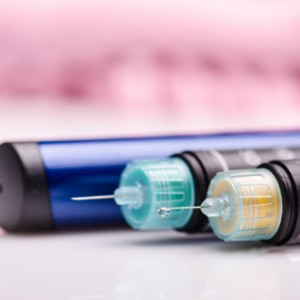 A new study entitled “Insulin Resistance in Rheumatoid Arthritis: Disease Related Indicators and Associations with the Presence and Progression of Subclinical Atherosclerosis” reports that higher insulin resistance in patients with rheumatoid arthritis does not increase the risk for atherosclerosis. The study was published in the journal Arthritis & Rheumatology.
A new study entitled “Insulin Resistance in Rheumatoid Arthritis: Disease Related Indicators and Associations with the Presence and Progression of Subclinical Atherosclerosis” reports that higher insulin resistance in patients with rheumatoid arthritis does not increase the risk for atherosclerosis. The study was published in the journal Arthritis & Rheumatology.
Rheumatoid arthritis (RA) is a chronic inflammatory disorder that mainly affects small joints in the hands and feet and leads to swelling and joint deformity. Although therapeutics have diminished joint inflammation and prevent joint damaging, affected patients still exhibit lower life expectancy mainly due to an increased risk of heart attacks and stroke. The reason for this increased risk in cardiovascular events, as well as carotid atherosclerosis (characterized by the build-up of necrotic cells, lipids and cholesterol crystals in arteries), is however, not completely understood. Several reports identified that RA patients exhibit an increase prevalence of insulin resistance, however, if this leads to increased atherosclerosis risk remained to be addressed.
In this study, a team of researchers addressed this point by comparing insulin resistance in two different groups – a group of patients with RA (195 patients) and a control group of demographically matched non-RA individuals (198 patients). Patients enrolled in this analysis were part of the cohort study called ESCAPE RA (Evaluation of Subclinical Cardiovascular disease And Predictors of Events in Rheumatoid Arthritis), and were previously diagnosed with RA, according to the 1987 RA classification criteria. Insulin Resistance in both groups was estimated using the homeostatic model (HOMA-IR).
The team of researchers, led study first-author Jon T. Giles, M.D., M.P.H., from Columbia University in New York City, found that the RA group exhibited a 31% increase average HOMA-IR levels, when compared to the non-RA control group. This increase was always observed in the RA group, and was independent of demographic or cardiometabolic risk factors. Additionally, the authors found that in the control group, HOMA-IR levels were associated high levels of both C-reactive protein (CRP) and IL-6 (markers of systemic inflammation), however, the same was not observed in RA patients. In this group, both men and women, HOMA-IR increased levels were associated with rheumatoid factor (RF) seropositivity (seropositivity≥40 units). Patients using prednisone (a synthetic corticosteroid that works as an immunosuppressant drug and is prescribed to treat inflammatory diseases), higher HOMA-IR was restricted to women patients.
Notably, despite the increased IR levels in RA-patients group, when compared to controls, the authors found no association with several features of subclinical atherosclerosis, after adjusting to cardiovascular risk factors. This was further demonstrated by following RA patients during 3.2 years, where neither baseline nor average HOMA-IR was associated with alterations to atherosclerosis measures.
Thus, despite IR levels are increased in RA patients they do not increase the risk for atherosclerosis.


